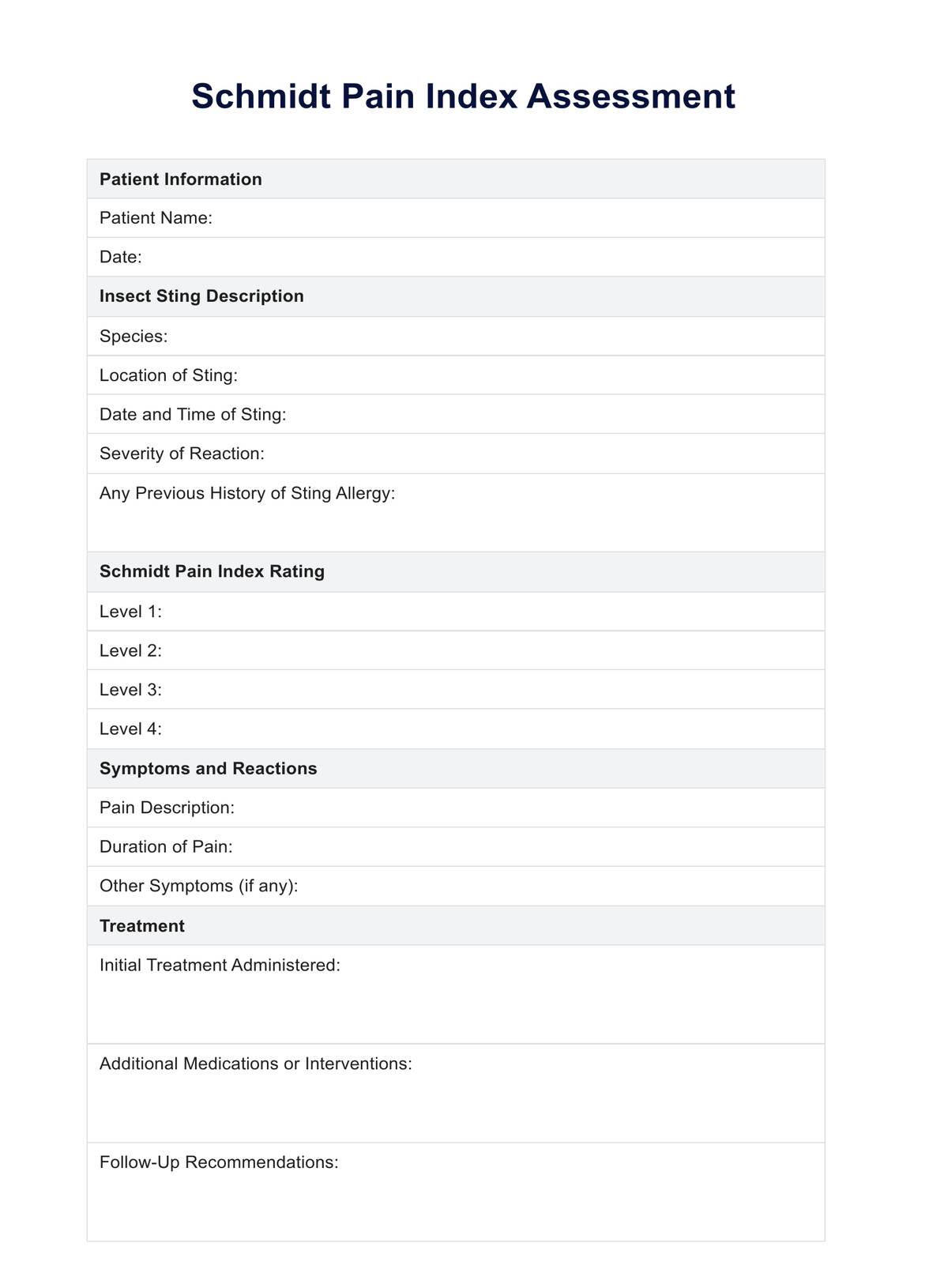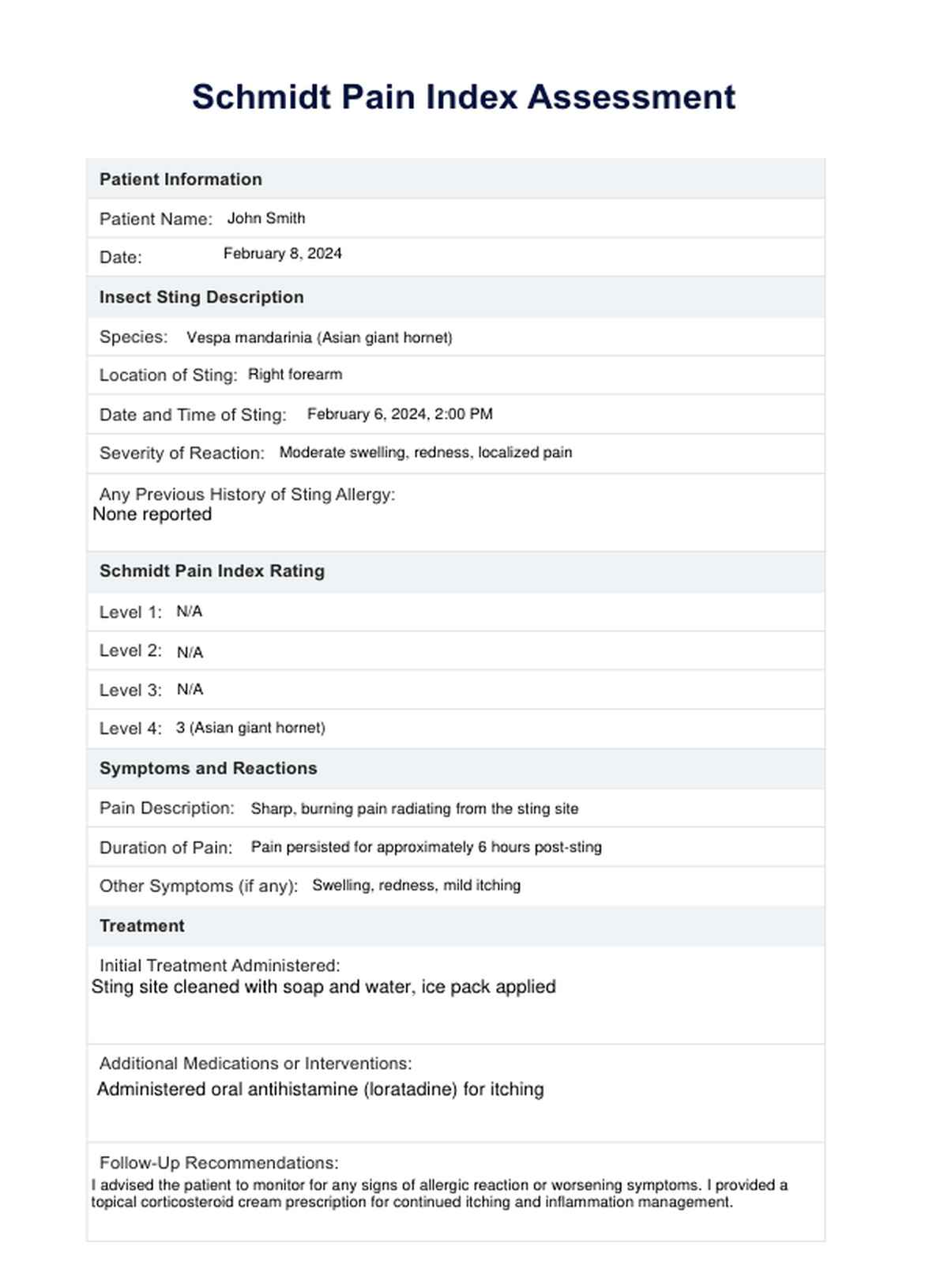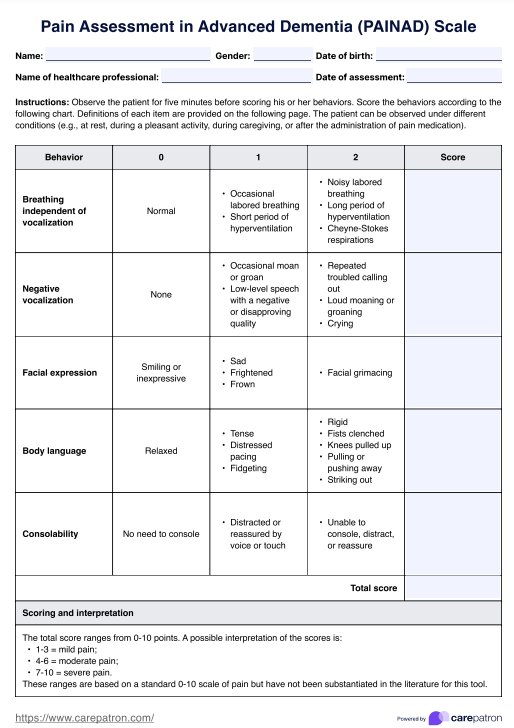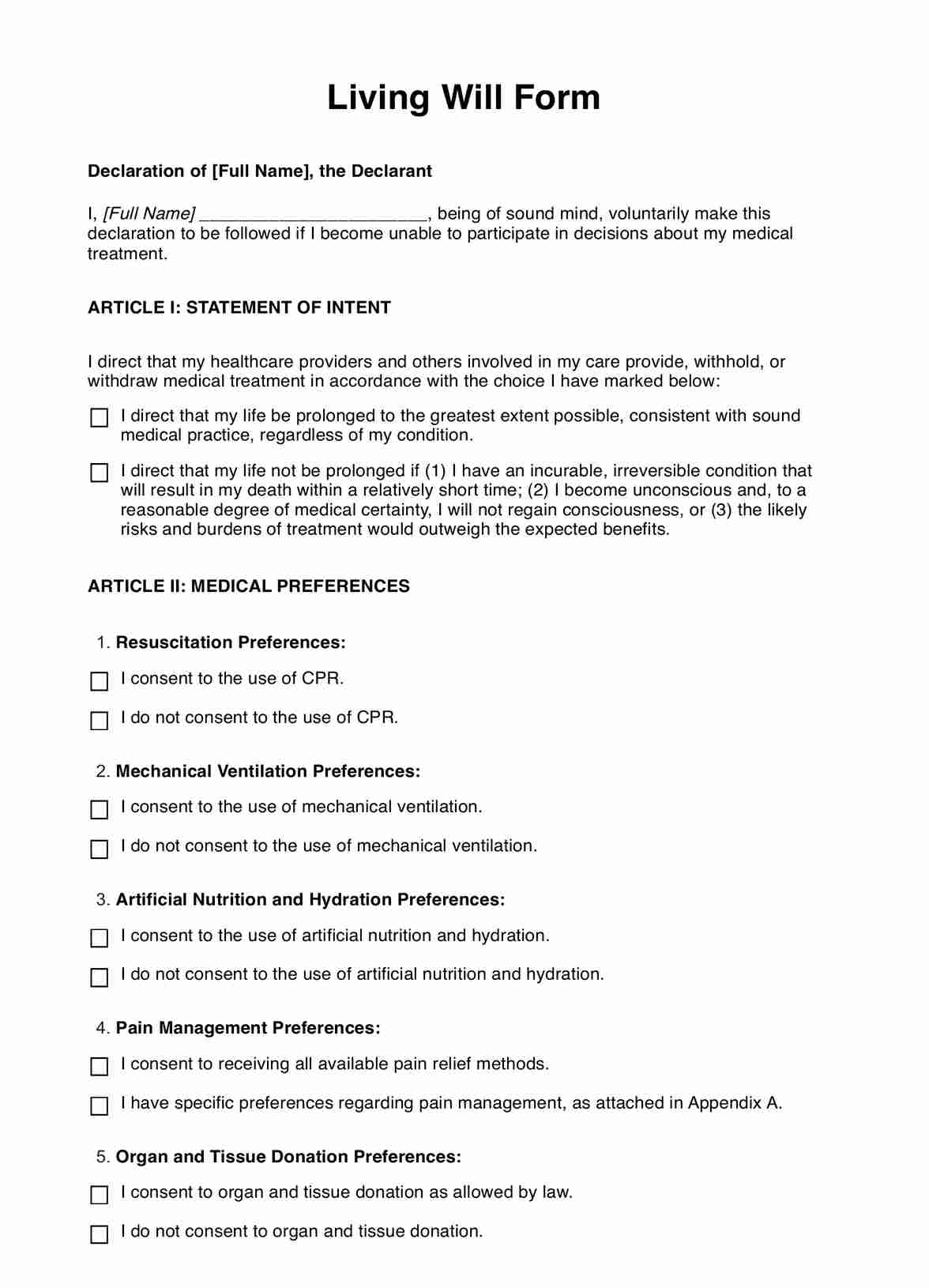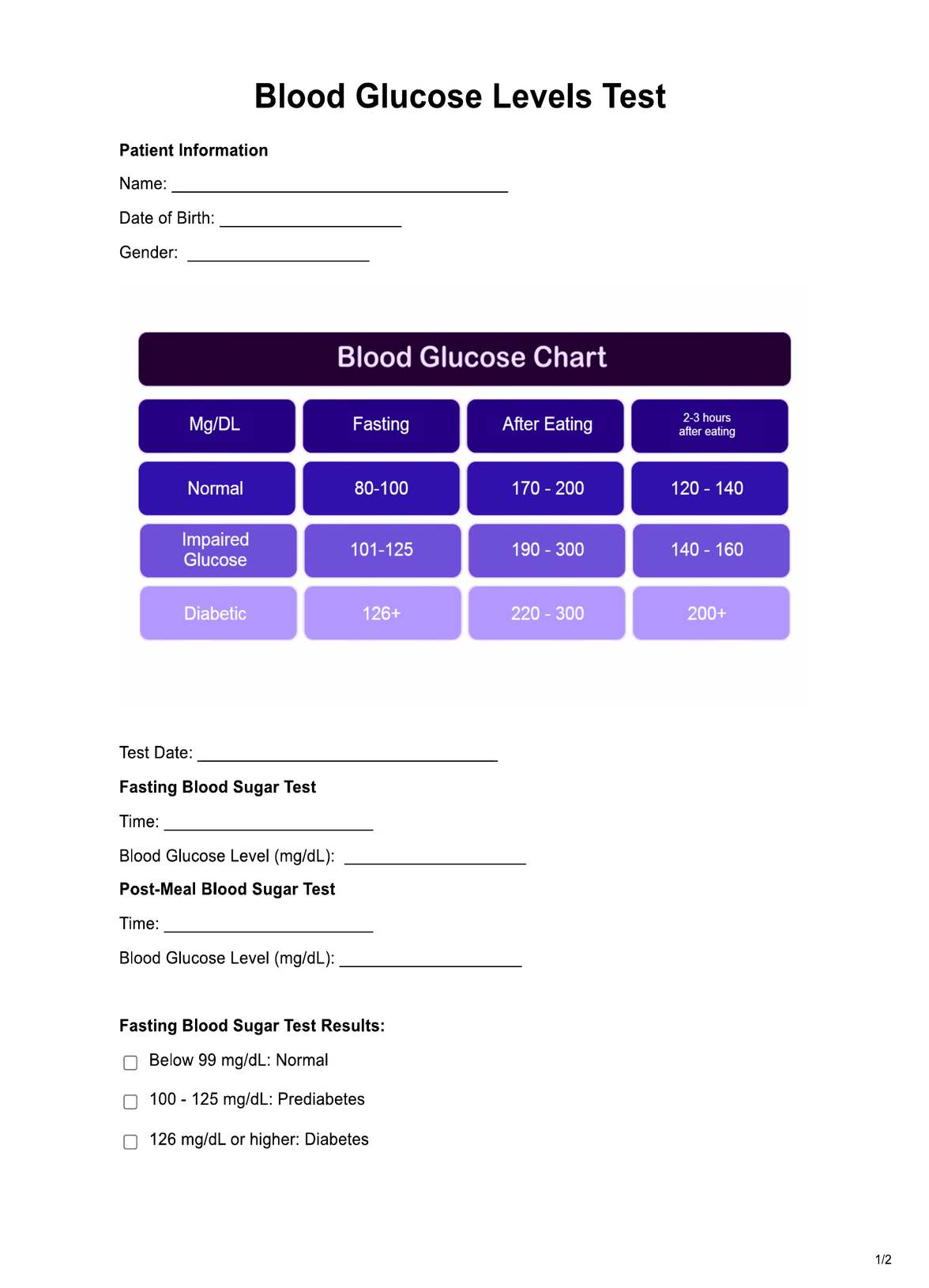Schmidt Pain Index
Dive into the Schmidt Pain Index: a vital tool for medical practitioners dissecting insect bites' severity and pain management strategies.


What are insect stings?
Insect stings are defensive mechanisms used by certain insects, primarily bees, wasps, hornets, ants, and some species of caterpillars, to protect themselves or their colonies from perceived threats. These stings typically inject venom into the victim's skin, causing a painful or irritating reaction. The venom composition varies between species and can elicit different human responses, ranging from mild discomfort to severe allergic reactions.
The anatomy of an insect sting usually involves a specialized structure such as a stinger, a modified ovipositor, or a modified egg-laying organ. When the insect feels threatened, it thrusts its stinger into the skin of the perceived aggressor, releasing venom from venom glands near the stinger's base.
The effects of insect stings can vary widely depending on factors such as the type of insect, the amount of venom injected, and the individual's sensitivity or allergic response. Common symptoms of insect stings include localized pain, swelling, redness, and itching at the sting site. In more severe cases, individuals may experience systemic reactions such as difficulty breathing, nausea, vomiting, dizziness, or anaphylaxis, which can be life-threatening and require immediate medical attention.
Preventive measures such as avoiding known insect habitats, wearing protective clothing, and using insect repellents can help reduce the risk of insect stings. Additionally, prompt antihistamines, corticosteroids, or epinephrine treatment may alleviate symptoms and prevent complications in individuals allergic to insect venom.
What particular insect stings are dangerous and life-threatening?
Several insect stings are considered dangerous and can pose life-threatening risks, especially for individuals allergic to their venom. Some of the most notable include:
- Honeybees: While honeybee stings are generally not life-threatening for most people, individuals allergic to bee venom can experience severe allergic reactions, including anaphylaxis.
- Yellowjackets: Yellowjackets are aggressive wasps known for their painful stings. Their venom can cause severe allergic reactions and anaphylaxis in sensitive individuals.
- Hornets: Hornets, particularly species like the Asian giant hornet (Vespa mandarinia), deliver potent venom that can cause significant tissue damage and systemic reactions. Stings from these giant hornets can be particularly dangerous.
- Fire ants: Fire ants are notorious for their painful stings and venom that can cause severe allergic reactions in sensitive individuals. Fire ant stings can lead to anaphylaxis, especially in people who have been stung multiple times.
- Bullet ants: Found in Central and South America, bullet ants possess one of the most painful stings in the insect world. While not typically life-threatening, their stings can cause intense pain and systemic symptoms.
For individuals with known allergies to insect venom, even stings from less potent insects like bees or wasps can be life-threatening and require immediate medical attention, including epinephrine.
Schmidt Pain Index Template
Schmidt Pain Index Example
What is the Schmidt Pain Index?
The Schmidt Sting Pain Index, developed by entomologist Justin O. Schmidt, categorizes the painfulness of insect stings on a scale from 1 to 4, with 4 being the most unbearable. Schmidt, through his experiences with various insect stings, including those of the bullet ant, tarantula hawk, honey bee, and harvester ant, meticulously described the sensations using vivid imagery and comparisons.
The bullet ant, found in South America, tops the scale with a pain rating out of 4. Described as "pure, intense, brilliant pain," its sting is likened to walking over flaming charcoal with a three-inch nail embedded in your heel. This excruciating sensation can last for hours and is characterized by unrelenting agony.
Other notable entries include the tarantula hawk, a wasp with a sting described as "shockingly electric" and capable of inducing eight unrelenting hours of excruciating pain. Similarly, the Maricopa harvester ant ranks high on the index, delivering a sting akin to "walking over flaming charcoal with a three-inch nail embedded."
Honey bees, despite their commonality, still pack a punch with their sting described as "mildly alarming" and capable of inflicting pain lasting for a few minutes. Other entries, such as fire ants and paper wasps, contribute to the diverse array of painful experiences documented by Schmidt.
The Schmidt Pain Index serves as a reference point for understanding the relative painfulness of insect stings and sheds light on these creatures' intricate biochemistry and defensive mechanisms. Schmidt's work, published by Johns Hopkins University Press, continues to be a valuable resource in studying insect defenses and pain receptors.
How does the Schmidt Pain Index work?
The Schmidt Pain Index, created by entomologist Justin O. Schmidt, is a scale used to classify the painfulness of insect stings. It operates on a numerical scale ranging from 1 to 4, with each number corresponding to a level of pain intensity and duration. The index is based on Schmidt's experiences and observations of being stung by various insects.
Here's how the Schmidt Pain Index works:
- Level 1: Stings at this level are described as causing "mildly alarming" or "slightly painful" sensations. They typically involve insects like sweat bees or bumblebees and produce relatively short-lived pain, lasting only a few minutes.
- Level 2: Stings in this category induce more significant discomfort, often described as "painful." Examples include honey bees and yellowjackets. The pain may last for several minutes to an hour.
- Level 3: Stings at this level are considered highly painful, with sensations characterized as "excruciating." Insects like harvester ants and paper wasps fall into this category. The pain can be intense and may last for several hours.
- Level 4: The highest level on the scale, reserved for the most agonizing stings. Insects like the bullet ant and tarantula hawk wasp are classified here. The pain is described as "pure, intense, brilliant" and may last several hours or even a day. It can be debilitating and excruciating.
The index is based on pain intensity and the duration and quality of the pain experienced. Schmidt used colorful descriptions and analogies to convey his sensations after being stung, making the index informative and engaging.
Who uses the Schmidt Pain Index, and when are the best times?
The Schmidt Pain Index is primarily used by entomologists, researchers, and enthusiasts interested in understanding the relative painfulness of insect stings. It is a valuable tool for studying insect defenses, pain perception, and the biochemical properties of venom.
The Schmidt Pain Index can be used in various contexts:
- Scientific research: Entomologists and researchers utilize the index to study the physiological effects of insect venoms, pain perception, and defensive strategies in insects. Researchers can gain insights into evolutionary adaptations and ecological interactions by categorizing and comparing the painfulness of different insect stings.
- Education and outreach: The index is often used in educational settings, such as classrooms, museums, and nature centers, to engage students and the public in learning about insects. It helps to illustrate the diversity of defensive mechanisms in the insect world and fosters curiosity about entomology and biology.
- Personal safety: For individuals working or spending time in areas where stinging insects are prevalent, such as outdoor enthusiasts, gardeners, and field researchers, the Schmidt Pain Index can provide valuable information on the potential risks associated with different insect species. Knowing the relative painfulness of insect stings can help people take appropriate precautions to avoid encounters or mitigate the effects of stings.
- Comparative studies: The index compares insect species and their defensive capabilities. Researchers can identify patterns and trends in venom potency, sting morphology, and ecological roles by understanding how various insects rank on the pain scale.
The best times to use the Schmidt Pain Index are when:
- Conducting field studies or experiments involving stinging insects.
- Providing education or outreach activities related to entomology and biology.
- Assessing potential risks and safety measures in areas inhabited by stinging insects.
- Conducting comparative analyses of insect venoms and defensive strategies.
What are the benefits of using the Schmidt Pain Index?
The Schmidt Pain Index offers several benefits in the fields of entomology, biology, education, and personal safety:
- Quantitative comparison: The index provides a systematic and standardized method for comparing the painfulness of insect stings. By assigning numerical values to different levels of pain intensity, researchers can quantify and analyze the relative effects of various insect venoms.
- Insights into evolutionary biology: Understanding the painfulness of insect stings can offer insights into the evolutionary adaptations and ecological roles of different insect species. The index allows researchers to explore the selective pressures driving the development of defensive mechanisms in insects.
- Education and outreach: The vivid descriptions and engaging analogies in the Schmidt Pain Index make it an effective educational tool. It can captivate the interest of students, educators, and the public, fostering curiosity about entomology, biodiversity, and ecological interactions.
- Risk assessment and management: For individuals working or spending time in areas inhabited by stinging insects, such as outdoor enthusiasts, farmers, and field researchers, the index can help assess potential risks and implement appropriate safety measures. Knowing which insects have the most painful stings enables people to take precautions to avoid encounters or mitigate the effects of stings.
- Conservation and pest management: Understanding the defensive capabilities of different insects is crucial for conservation efforts and pest management strategies. By knowing which insects have potent venom and painful stings, conservationists and pest control professionals can develop effective strategies for species conservation and pest control while minimizing harm to humans and the environment.
- Scientific research: The Schmidt Pain Index is valuable for researchers studying insect venoms, pain perception, and defensive strategies. It provides a framework for designing experiments, analyzing data, and drawing conclusions about insect stings' physiological and ecological effects.
Commonly asked questions
The Schmidt scale of pain, developed by entomologist Justin O. Schmidt, categorizes the painfulness of insect stings on a scale from 1 to 4, with 4 being the most unbearable.
According to the Schmidt scale, the bullet ant delivers the most painful sting, with only the bullet ant rating a 4 out of 4.
The bullet ant's sting is often considered the most painful in the animal kingdom.


